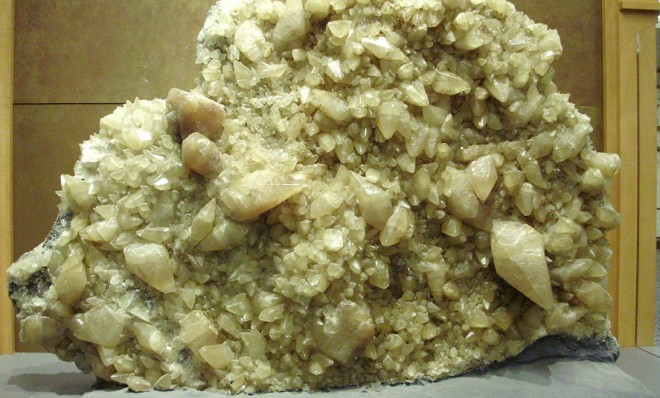Did scientists just find the fabled Viking sunstone?
The mythical rock was said to help ancient sailors navigate the seven seas

GPS makes it relatively easy for seafarers to accurately point their ships where they want to go. But long ago, well before the Chinese employed the first magnetic compass, navigating the uncharted ocean's vast expanses was a truly treacherous task that required wits, training, improvisation, and, thanks to the limited tools available, a little ingenuity.
In his book Chasing the Sun: The Epic Story of the Star That Gives Us Life, author Richard Cohen describes a mythical crystal that helped the ancient Vikings navigate their ships through fog and cloud-covered skies in which the sun and stars weren't visible. Historians call this device the sunstone.
Ancient texts say it was carved from natural crystal, which was said to work as a prism, refracting light into "two shafts of color"; staring into it, therefore, revealed two reflected faces. By orienting the sunstone to unite the faces into a single image — which could only be done with the sun in a certain position relative to the stone — directionless sailors could effectively determine east and west even when the sun wasn't clearly visible.
The Week
Escape your echo chamber. Get the facts behind the news, plus analysis from multiple perspectives.

Sign up for The Week's Free Newsletters
From our morning news briefing to a weekly Good News Newsletter, get the best of The Week delivered directly to your inbox.
From our morning news briefing to a weekly Good News Newsletter, get the best of The Week delivered directly to your inbox.
A short story, "Raudulfs Thattr," preserved in a manuscript from the early fourteenth century, tells of a visit by Olav Haraldson, king of Norway, to a rich farmer. Olav asks his host's son, Sigurd, if he has any special talent, and the boy replies that he can tell the time even when there is no celestial body visible. Intrigued, the king the next morning challenges Sigurd to demonstrate his skill against the overcast sky. Once the youth has done so, Olav orders him to hold up a sunstone in the direction he believes the Sun to be. Sunlights streams through the prism, verifying Sigurd's gift. [Chasing the Sun, p. 278-279]
There was, however, one small problem: Historians and academics had no physical proof that such a magnificent rock ever existed... at least until recently.
The new discovery relates to the Alderney, a majestic Elizabethan war vessel that mysteriously sank in the fierce waters north of the Channel Islands in 1592. The wreckage, discovered in 1977 when a "long concreted object" became tangled in a fishing vessel's lobster pods, was found to contain a number of interesting artifacts: Heavy naval ordnance (like cannons), breast plate armor, tobacco pipes, and — most curiously of all — a strange, three-foot-long crystal made of Icelandic Spar.
After years of research, chemical analysis has revealed that this strange artifact is composed of calcite crystal — the mineral that may have been used in the Vikings' legendary sunstones. A group of scientists at the University of Rennes in Frances claim that while no such crystals have ever been recorded at Viking sites — at least in one piece — the cloudy chunk of stone could be the thing that once helped sailors navigate the seven seas. In other words, though experts have no idea how it was obtained, the crew of the Alderney may have been in possession of a timeless chunk of maritime innovation. A real, bonafide sunstone.
Mind you, the three-foot crystal chunk recovered by excavation divers is useless now; hundreds of years spent in seawater have rendered the stone a cloudy, muddled mess. Nevertheless, researchers are excited by the prospects it raises, as the rock could give historians a clearer picture of what navigating the ocean was like prior to the advent of the humble compass.
A free daily email with the biggest news stories of the day – and the best features from TheWeek.com
The study was published in the journal Proceedings of the Royal Society A.
-
 A lemon-shaped exoplanet is squeezing what we know about planet formation
A lemon-shaped exoplanet is squeezing what we know about planet formationUnder the radar It may be made from a former star
-
 Political cartoons for January 4
Political cartoons for January 4Cartoons Sunday's political cartoons include a resolution to learn a new language, and new names in Hades and on battleships
-
 The ultimate films of 2025 by genre
The ultimate films of 2025 by genreThe Week Recommends From comedies to thrillers, documentaries to animations, 2025 featured some unforgettable film moments